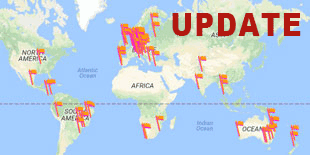Cymatics brings to life the hidden realm of sound that the eye is unable to process. “Cymatics, from Greek: κῦμα, meaning “wave”, is a subset of modal vibrational phenomena. The term was coined by Hans Jenny (1904-1972), a Swiss follower of the philosophical school known as anthroposophy. Typically the surface of a plate, diaphragm or membrane is vibrated, and regions of maximum and minimum displacement are made visible in a thin coating of particles, paste or liquid. Different patterns emerge in the excitatory medium depending on the geometry of the plate and the driving frequency.”
Cymatics and Sonic Geometery
“Throughout history, numerous clues and hints regarding geometry and frequency have been staring at us, calling to us, and waiting for us to put them into place like pieces of a giant puzzle. Here at the dawn of a new age, this sonic-geometric puzzle is finally nearing completion, revealing the building blocks of a language based on energy, frequency and form.
How will we use it? With whom will we be communicating? Now that we know the basics of this new language, maybe we are ready to begin the conversation…. again?”
More About Cymatics
“On July 8, 1680, Robert Hooke was able to see the nodal patterns associated with the modes of vibration of glass plates. Hooke ran a bow along the edge of a glass plate covered with flour, and saw the nodal patterns emerge
The German musician and physicist Ernst Chladni noticed in the eighteenth century that the modes of vibration of a membrane or a plate can be observed by sprinkling the vibrating surface with a fine dust (e.g., lycopodium powder, flour or fine sand). The powder moves due to the vibration and accumulates progressively in points of the surface corresponding to the sound vibration. The points form a pattern of lines, known as nodal lines of the vibration mode. The normal modes of vibration, and the pattern of nodal lines associated with each of these, are completely determined, for a surface with homogeneous mechanical characteristics, from the geometric shape of the surface and by the way in which the surface is constrained.”
(source wikipedia)











